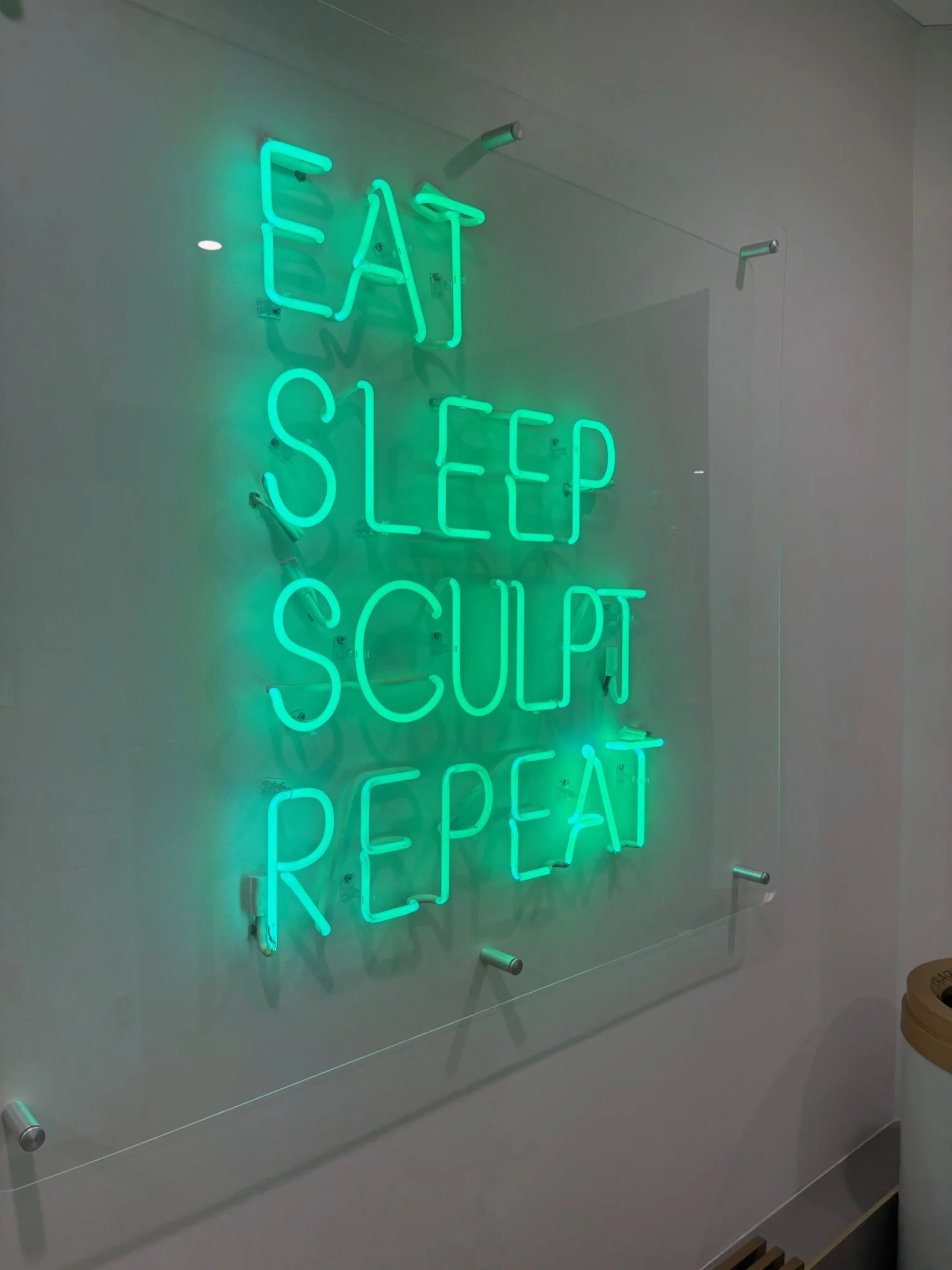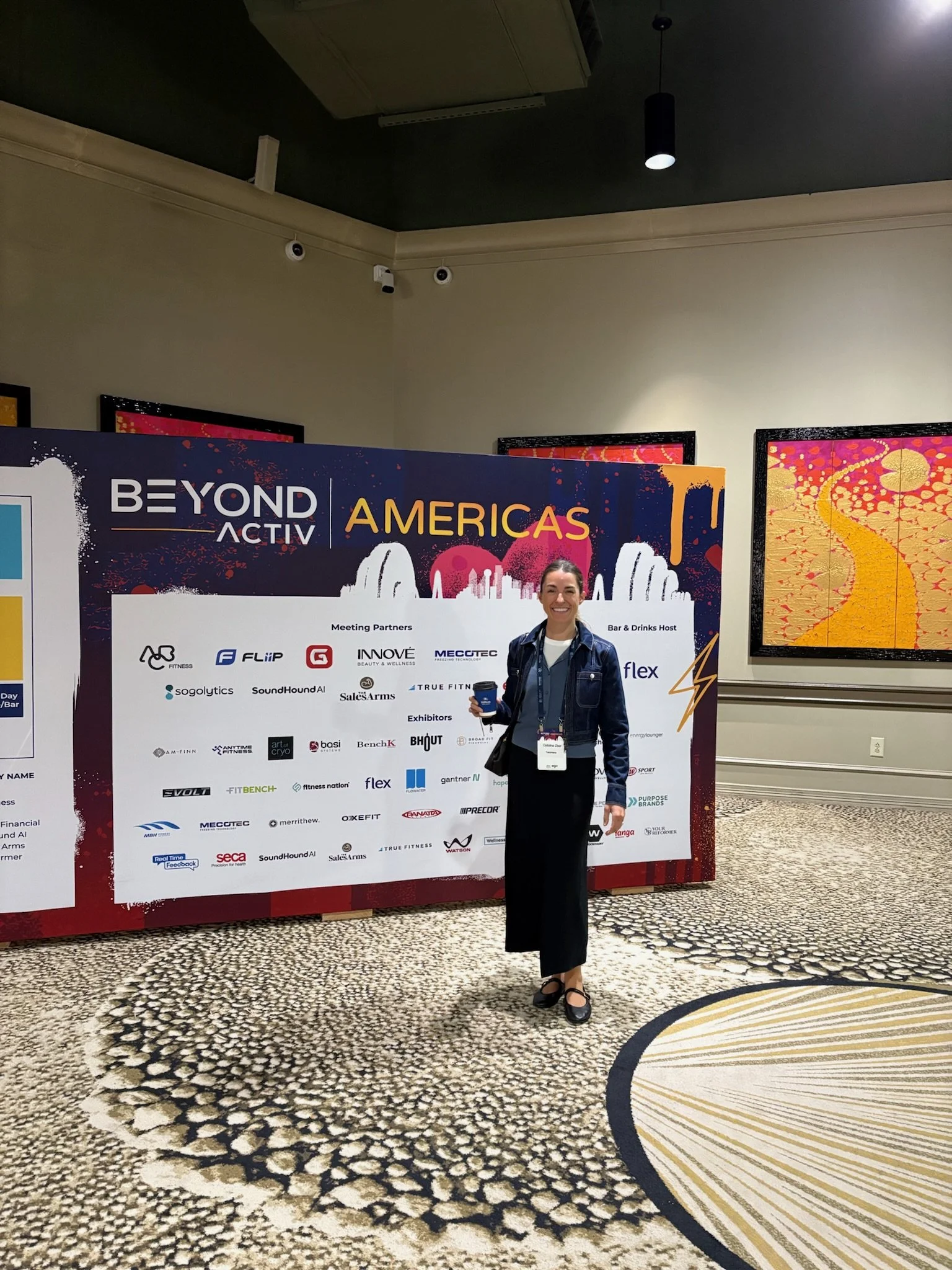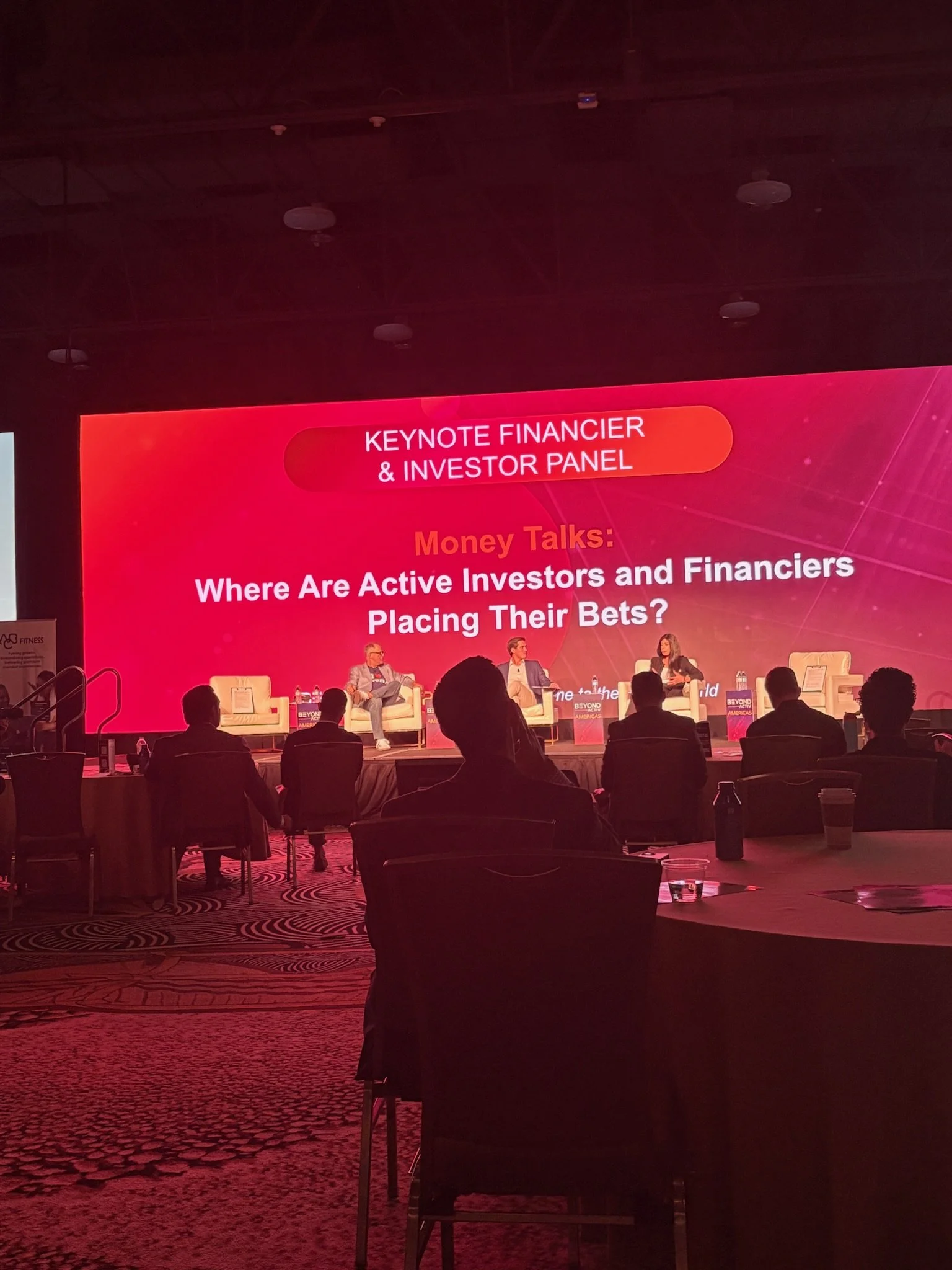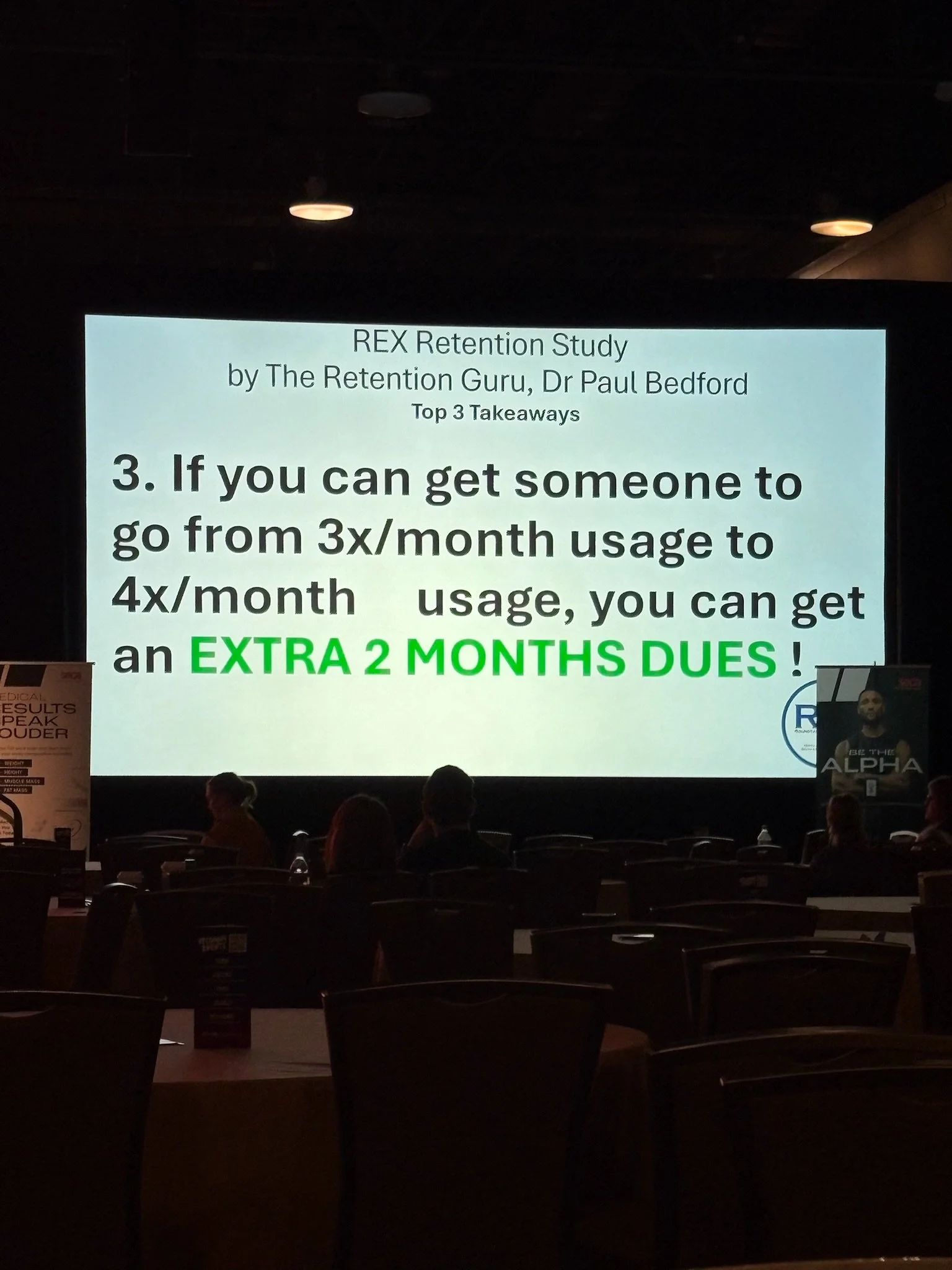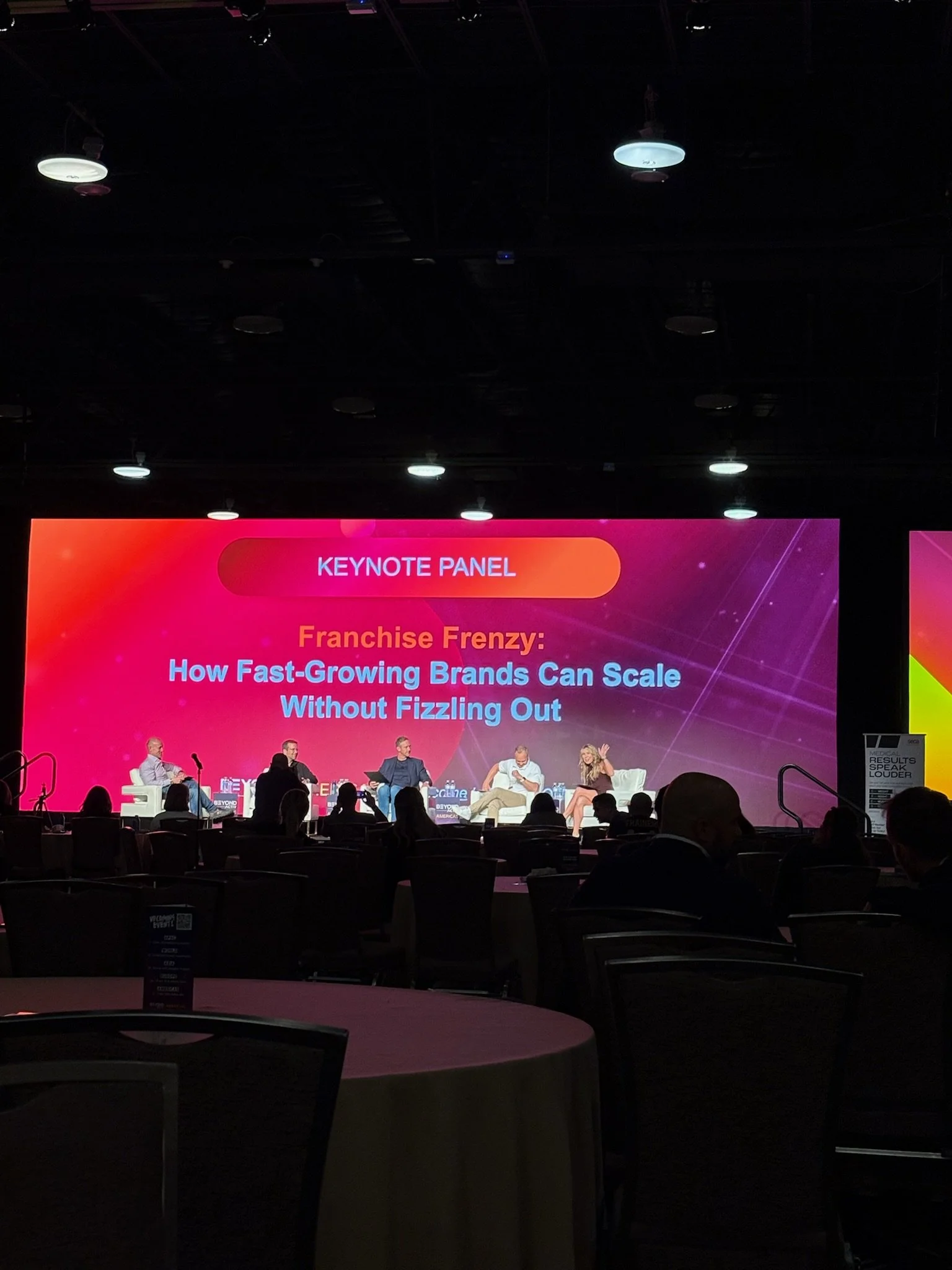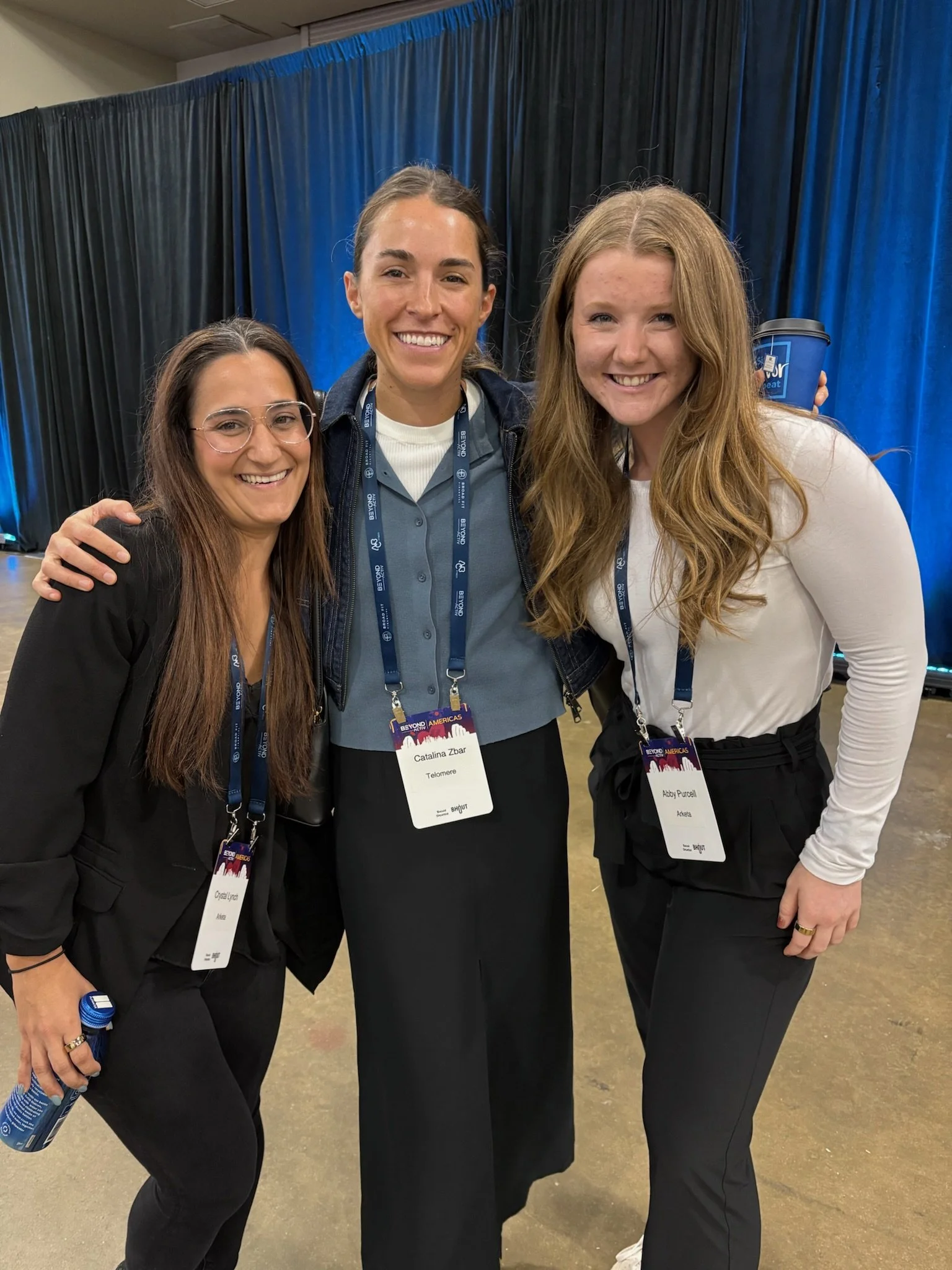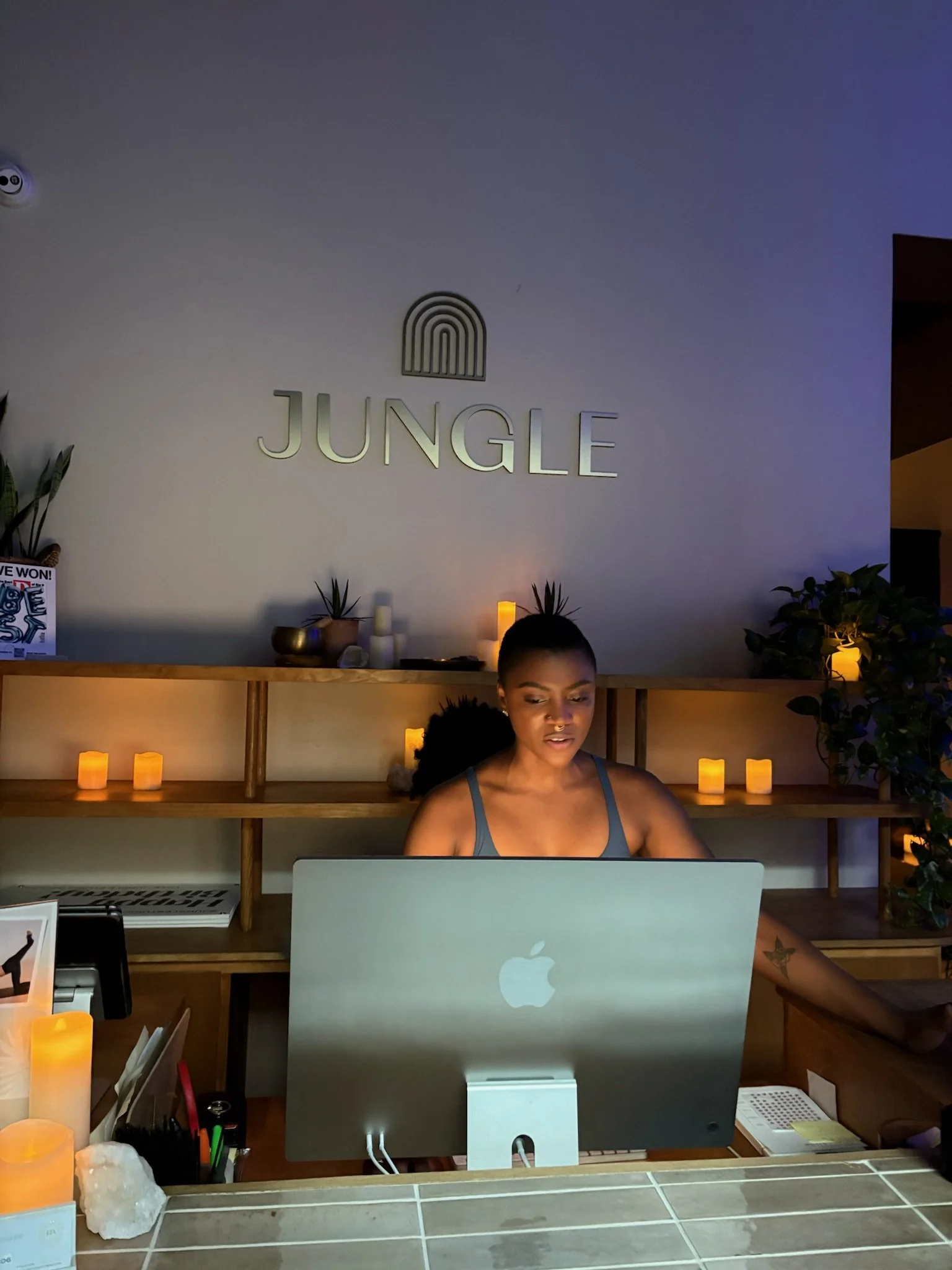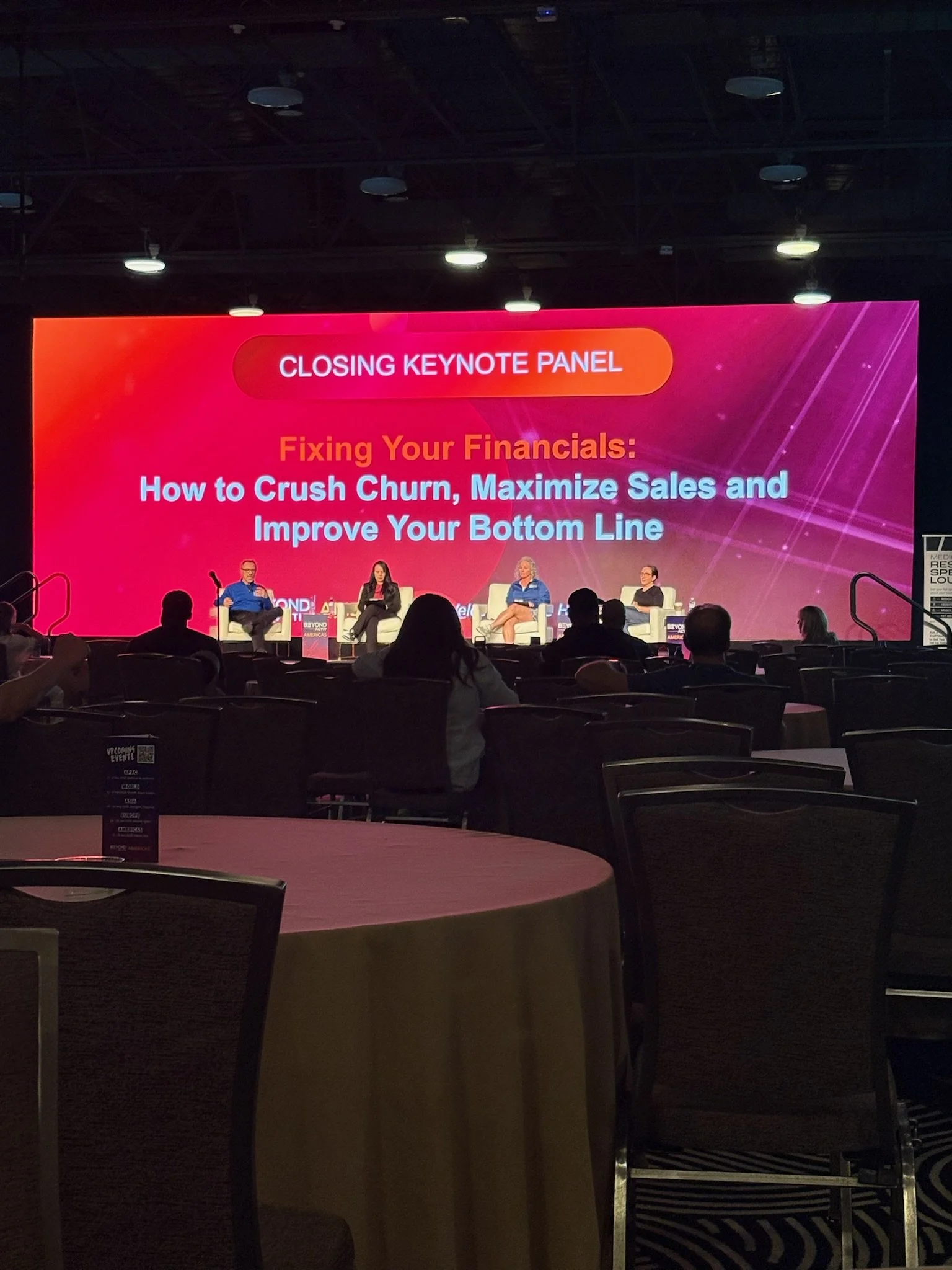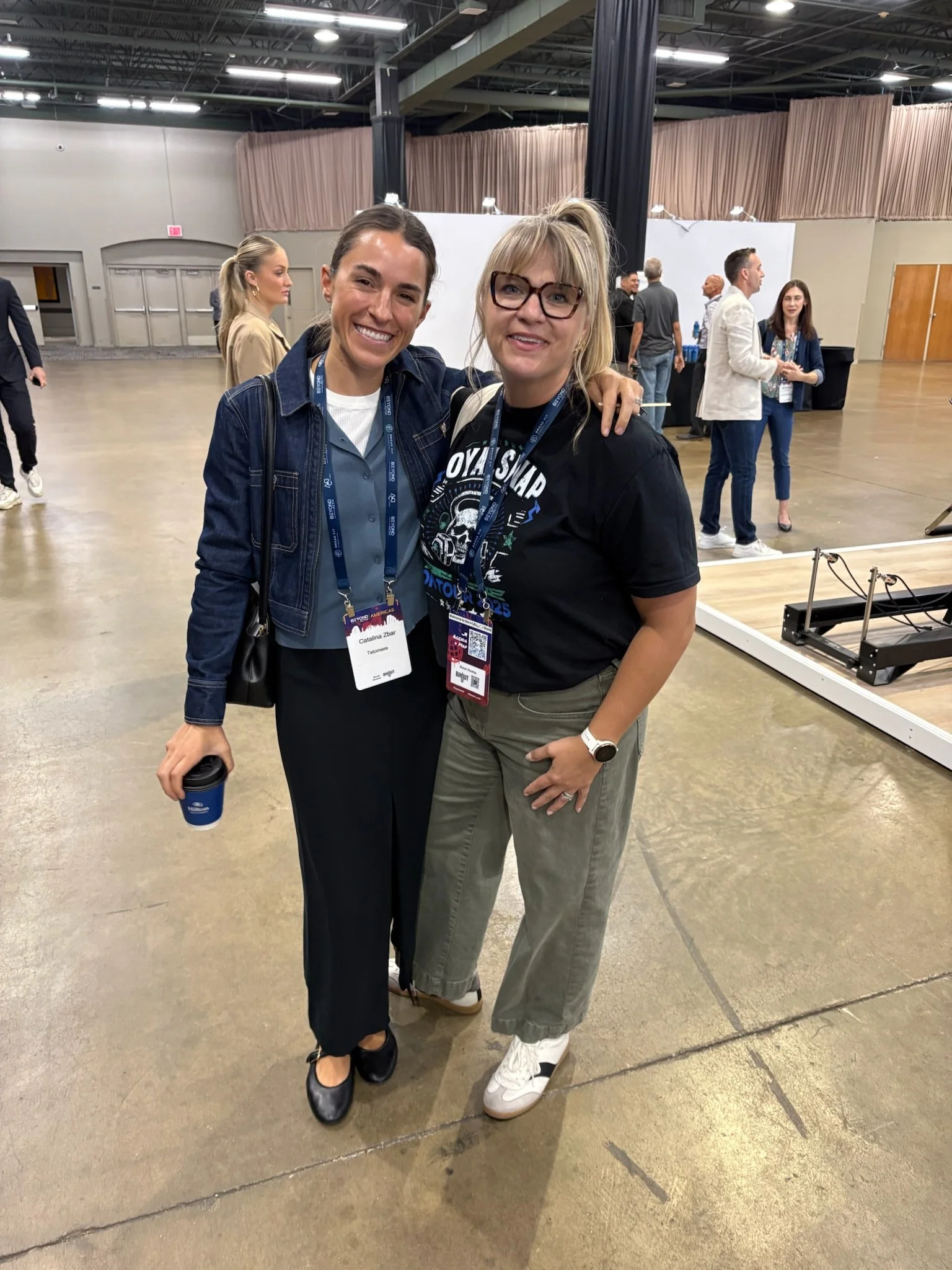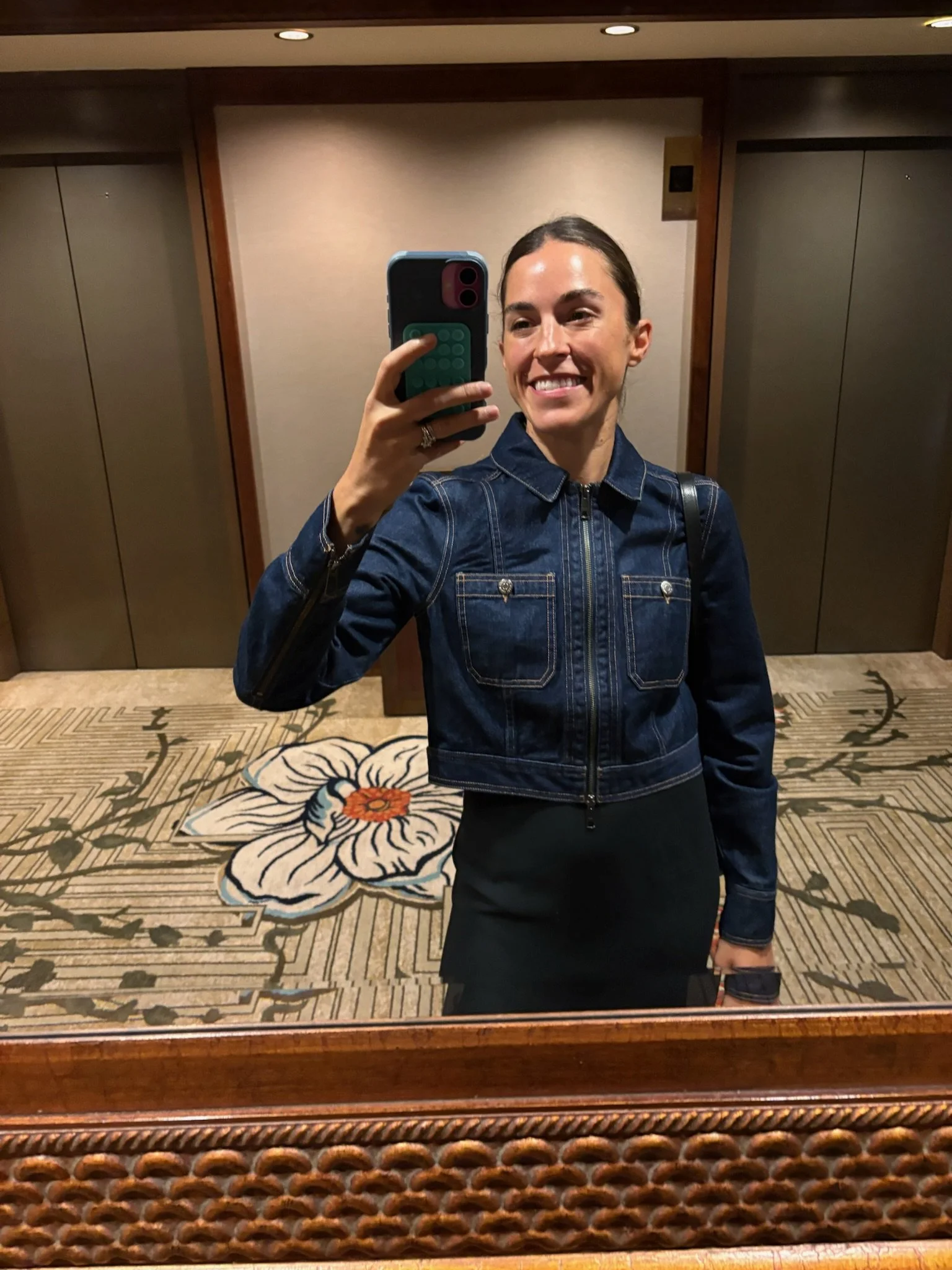What's Next for the Fitness Industry? Insights from Beyond Activ Americas
I just got back from Beyond Activ Americas in Dallas, and honestly? It re-affirmed everything we already know, but hearing it from industry veterans who've started, scaled, and exited 100+ location franchises hit different.
Over 1,000 executives from 40 countries. Industry veterans from RSG Group, Purpose Brands, Xponential Fitness, Orange Theory, BodyBar Pilates, Solidore, Oxygen Yoga & Fitness, and dozens of other brands shaping where fitness is headed. Two full days of unfiltered conversation about what's working, what's breaking, and what's next.
If you weren't there, here's what you missed—and more importantly, what it means for anyone building in this space.
The Big Picture: We're in Uncharted Territory
The opening session set the tone: we're in a period of innovation we've never seen before in this industry.
AI is coming. Investors are circling. Consumers are more demanding than they've ever been. The pace of change is accelerating faster than most operators can keep up with.
In fact, one of the most telling signs of where the industry is headed was the Keynote Financier and Investor Panel: "Money Talks – Where Are Active Investors and Financiers Placing Their Bets?" The fact that these kinds of sessions are now more part of the conversation than ever before, with capital partners and private equity companies in attendance, speaks volumes. There are more eyes on this industry than ever before because of the growth and opportunity everyone sees ahead.
But here's the consensus from every major player in the room: we're not heading into chaos. We're heading into the golden age of fitness.
Post-COVID, there's been a massive cultural shift. People finally understand that investing in wellness—mental health, sleep, recovery, movement—isn't optional. It's essential. We're servicing a third of the population in many communities, and that number is growing.
The opportunity is massive. But only if we don't repeat the mistakes of the past decade.
1. Culture Is the Only Moat That Matters
This came up in almost every session, from franchise discussions to profitability panels to growth strategy breakouts.
Your culture is impossible to copy.
Equipment? Replicable. Marketing? Replicable. Class formats? Definitely replicable.
But the way your team shows up? The way members feel when they walk in the door? The rituals, the language, the unspoken things that make your place your place? That's the only sustainable competitive advantage you have.
Paul Reuter, Senior Vice President of Franchisee Relations and Performance at Purpose Brands, said it perfectly: "Are you buying our franchise, or are you buying our culture?"
Because if you're just buying a logo and a business model, you're going to fizzle out. Franchising—and honestly any multi-location strategy—is about replicating a feeling, not a floor plan.
In experience-based businesses, culture is everything. Protect it. Preserve it. Hire for it. Fire to defend it.
2. Responsible Growth Beats Rapid Expansion Every Single Time
This one hit hard because I've seen it play out so many times.
Multiple speakers—from boutique owners to big box CEOs—said some version of this: "Every site you open teaches you something you didn't know. If you're opening so quickly that you don't have time to learn from the mistakes of the previous opening, you're growing too quickly."
One panel talked about the risks of growth: issues with people and culture when expansion happens faster than your systems can handle. Another mentioned that if owners don't follow the presale model closely and start making tweaks too early, that's often a red flag.
The brands that are winning long-term? They're leaning into moving faster and going deeper—but they're doing it with discipline.
BodyBar Pilates, for example, started with 3 locations in 2019. Now they have 63 open and 173 sold. How? They rely heavily on KPIs and make sure their operators know what to do with the data. But more importantly, they only grow with the right people who genuinely want to be there.
Healthy growth, profitability, and fun. That's the formula. Rush any of those three, and the whole thing crumbles.
3.: The Consumer Has Fundamentally Changed
Wellness is undergoing a cultural revolution, and if you're still operating with a pre-2020 mindset, you're already behind.
Here's what's happening:
Wellness spaces are now second spaces, not third. First is home. Second is your wellness or social club. Work is third (if it even ranks anymore).
Dean Kowarski, Group CEO of Virgin Active, spoke extensively about this shift, and the implications are significant. It means people are spending more time in fitness spaces than ever before. They're working out, sure but they're also working, socializing, eating, recovering.
The big opportunity as an industry? Monetize that extra dwell time.
The traditional gym model on its own isn't enough anymore. Consumers expect food options, spa services, workspaces, group classes, and a sense of community—all in one place.
One speaker put it bluntly: "The established gym model on its own is not enough to satisfy the consumers of today."
And here's the other shift: hybrid is here to stay. 55% of consumers work out both at home and at the gym. Over 60% of gym-goers have wearables and love the data they're getting.
So if you're not thinking about how to integrate that data, how to reduce churn by leveraging what people are already tracking, you're missing a huge retention opportunity.
4. Boutique's Competitive Advantage Is Personalization
Big box gyms are getting better. They're cleaner, better equipped, more tech-forward.
So what are boutiques doing to stay competitive?
They're creating community. They're getting to know their people—before class, after class, during milestones. They're recognizing achievements and creating opportunities for members to connect with each other.
One panelist said: "At Equinox, you're a barcode. Big box lacks the deeper level of personalization."
Boutique fitness is fundamentally a people business. You win by knowing your members' names, their goals, their struggles, their wins.
Orange Theory nailed this: their members tell their friends about their results because they're proud. How do you create that level of pride and sense of accomplishment in your classes and community? That's what makes members sticky.
Small unit operators are doing better right now because they have less to worry about and more bandwidth to focus on relationships.
But here's the important caveat: there's room for both big box and boutique. The future isn't one or the other—it's more collaborations, more partnerships, and operators who understand their lane and dominate it.
5.: Profitability Is Still Just Math
Let's talk numbers for a second.
Profitability has increased in the independently owned space. The average profitable single-location studio is making $500k.
Cost to set up a location, depending on size, is around $350k-$450k all-in. Yes, costs have gone up. But because studios can operate profitably in 1,500 square feet with contained costs, the math still works—if you run it right.
Jen Hamilton, CEO of Oxygen Yoga, said it best: "A studio is a PR business driven by a service model."
You're not selling equipment or square footage. You're selling transformation, community, and results.
And here's the kicker on diversification: stick to your foundation. Oxygen Yoga has primary classes (their OGs) and secondary formats to keep things fresh and buzzing. But they never lose sight of what built the business in the first place.
It's hard to think of a profitable studio—outside of Megaformer Pilates—that only offers one single modality anymore. Even "hot yoga" studios offer other formats. Club Pilates is the single largest buyer of TRX.
Why? Because consumers are demanding more. They're hearing they need strength, flexibility, endurance, recovery. If your single modality doesn't cover all of that, you're either going to evolve or accept you're only getting a slice of their fitness spend.
Profitability at the end of the day comes down to math. Revenue per square foot. Cost of acquisition. Lifetime value. Retention rate. Payroll as a percentage of revenue.
The operators doing well know their numbers cold.
6. AI Is Here to Stay (And It Will Change How We Do Everything)
AI is here to stay, and it will change how we do everything. The question isn't if, it's how and how fast.
Some think it'll lead to a 30% reduction in employment. Others think it'll create entirely new jobs we can't even imagine yet.
What everyone agreed on: AI will be hugely beneficial for making operations more efficient, reducing costs, and improving service delivery.
But the human element? That's not going anywhere. In fact, it's becoming more important, not less.
Bryan O'Rourke, CEO of Vedere Ventures and President of the Fitness Industry Technology Council, said: "You weaponize legacy for the future." Meaning: don't throw out what made you successful. Use it as fuel to adapt faster and smarter than your competition.
7. Don't Compete, Connect
Here's a mindset shift that came up multiple times:
Stop putting up walls with your competition.
The old approach—protect your secret sauce, don't share, don't engage—is dead. The brands winning right now are the ones learning from each other, spending time with peers, even collaborating with competitors.
Why? Because the industry rising tide lifts all boats. When fitness as a category gets stronger, everyone benefits.
Spend time with people you admire. Learn from your peers. Engage with competitors in ways that make both of you better.
It's not about being naive or giving away the farm. It's about recognizing that we're all solving variations of the same problems, and there's more to gain by learning together than by isolating.
8.: Recovery Studios Are the Next Big Thing
Quick sidebar: recovery studios are having a moment.
Think cryotherapy, compression therapy, infrared saunas, massage, float tanks—spaces built entirely around helping people recover faster and feel better.
As consumers get more sophisticated about wellness and start viewing recovery as non-negotiable (not a luxury), this category is exploding.
If you're a studio owner, this is worth paying attention to. Partnerships with recovery studios, adding recovery modalities to your offering, or even opening a recovery-focused location could be a smart play.
What This All Means
If I had to boil down two full days into one core message, it's this:
We have so much more potential. So much more opportunity. But people are at the heart of what we do.
Fitness is one of the best industries in the world. We get to impact people's lives every single day. We're in communities. We're helping people become healthier, stronger, more confident versions of themselves.
But we can't rush it. We can't treat growth like a vanity metric. We can't forget that "culture eats strategy for breakfast".
The brands that will win the next decade are the ones that:
Protect their culture relentlessly
Grow responsibly, not recklessly
Serve their communities with genuine care
Know their numbers and run a tight operation
Adapt to the evolving consumer without losing their identity
Leverage AI and tech without losing the human touch
If you do those things? The runway is endless.
Because we're not just in the business of fitness. We're in the business of transformation. And that never goes out of style.
A Personal Note
I've been in this industry for over 10 years now. I moved from the UK to Canada in 2018, navigated COVID in 2020, had kids, got older and wiser, and grew alongside the consumer every step of the way.
What keeps me energized? Conferences like Beyond Activ remind me that we still have so much opportunity ahead of us. Yes, it's in the numbers. But it's also part of our DNA as an industry to think that way. We want to impact as many people as possible with the benefits of wellness.
The pace at which this industry adapts is remarkable. The passion with which we move alongside our consumers, adjust to changing demographics, and evolve our offerings? It's what makes this space so exciting.
It's a pleasure and an honor to be here. To learn from people who've scaled 100+ location franchises. To connect with boutique owners building something real. To be part of a community that genuinely believes in what we're building.
Telomere is a consulting and marketing agency for boutique fitness and wellness studios worldwide. We help studio owners expand their reach, increase their profits and retain more clients with seamless data-driven solutions every. single. day. If you're looking for a team that can help you bring your vision to life (and give you more time to do what you love), you can count on us. Book your free intro call here.
At Telomere Consulting, our experienced team partners with boutique fitness and yoga studio owners to develop strategic frameworks that drive sustainable growth. We provide deep industry expertise and proven business strategies, helping you navigate everything from market positioning and pricing to marketing with confidence. Much like you help clients strengthen their bodies, we help you make the right strategic choices now so your business can thrive for years to come. Book your complimentary strategy session here to get started.
What's a Telomere?
A telomere is a protective structure found at the ends of chromosomes in your cells. The length of your telomeres is influenced by factors like genetics, stress, lifestyle choices, diet, and exercise. Telomere Consulting draws on this biological concept as a metaphor for helping businesses maintain their "health" and longevity through strategic choices - much like how healthy lifestyle choices may help preserve telomeres in the body.


